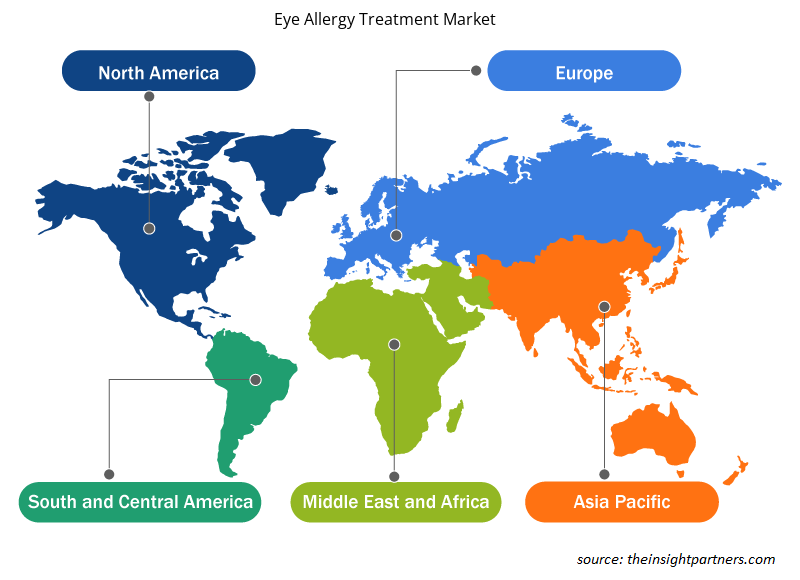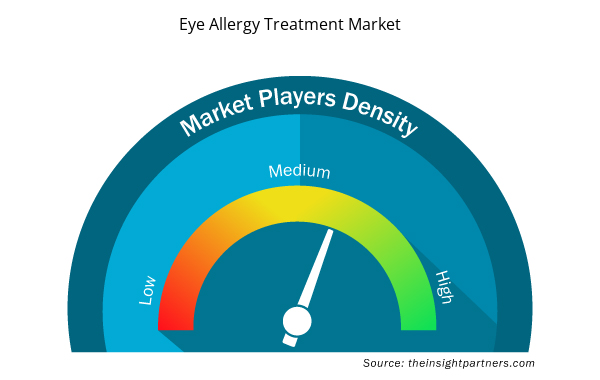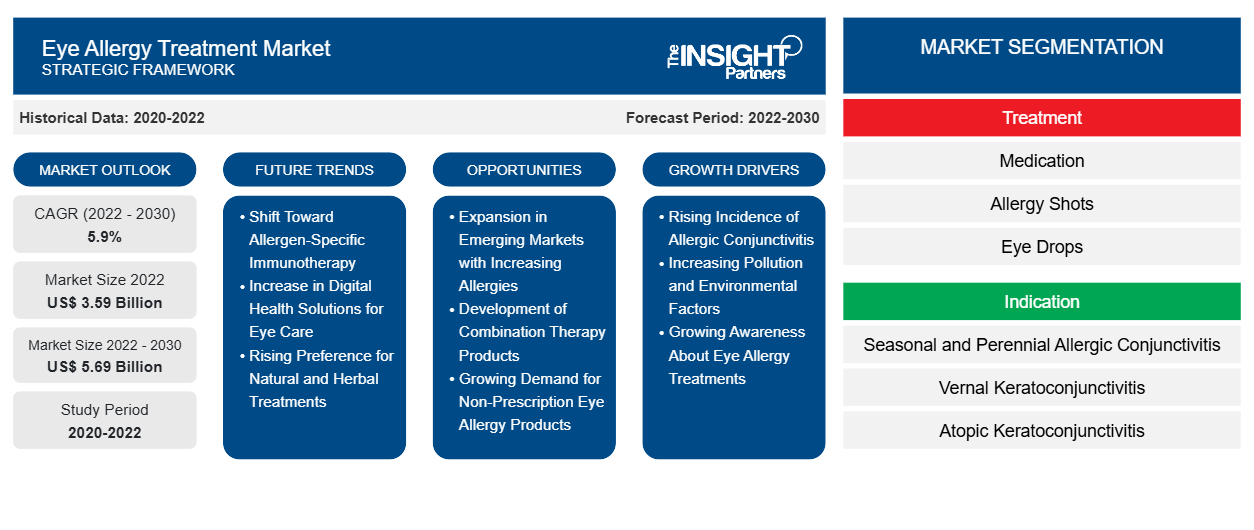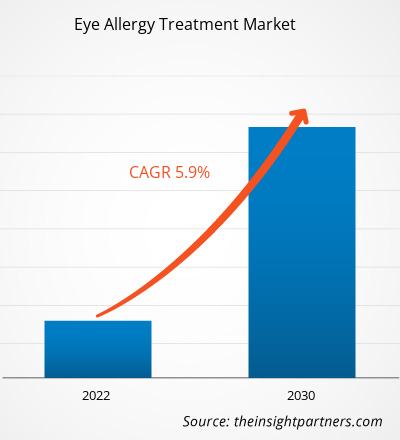[調査レポート] 眼アレルギー治療の市場規模は、2022年の35億9,000万米ドルから2030年には56億9,000万米ドルに達すると予測されており、2022年から2030年の間に5.9%のCAGRを記録すると予測されています。
市場洞察とアナリストの見解:
目のアレルギー治療には、目の充血、かゆみ、流涙、腫れなどの症状を緩和するために使用される市販薬と処方薬が含まれます。一般的に使用される製品には、抗ヒスタミン点眼薬、肥満細胞安定剤、併用療法などがあります。目のアレルギーの主な種類は、季節性または通年性アレルギー性結膜炎、春季カタル、アトピー性角結膜炎、接触性アレルギー性結膜炎です。世界中で目のアレルギーの罹患率が増加しており、市販薬が利用できるようになったことで、目のアレルギー治療市場の成長が促進されています。
成長の原動力:
アレルギー性結膜炎としても知られる目のアレルギーは、花粉、ほこり、動物、カビによって引き起こされます。大気汚染レベルの上昇は、目のアレルギーの発生率増加の一因となっています。さらに、ライフスタイルや食習慣の変化、アレルゲンへの曝露の増加、目の疲れにつながるスクリーンを見る時間の増加、目の不快感に対する感受性の増加により、世界中の人々の間で目のアレルギー反応が大幅に増加しています。
2020年に発表された「アレルギー性結膜炎の現代的考察」と題された研究によると、アレルギー性眼疾患は北米の人口によく見られる問題です。人口の約40%が罹患しており、その数は増加傾向にあります。眼アレルギー症状に苦しむ米国人口の半数は、症状緩和のために薬を必要としています。それでも、処方薬を使用しているのはそのうちのほんの一部に過ぎず、こうした新しい治療法の開発は特に魅力的です。
目のアレルギー治療には、目に影響を与えるアレルギーの治療と管理に使用される製品とソリューションが含まれます。治療には、目の充血、かゆみ、涙、腫れなどの症状を緩和するために使用される市販薬と処方薬が含まれます。一般的に使用される製品には、抗ヒスタミン点眼薬、肥満細胞安定剤、非ステロイド性抗炎症薬などがあります。目のアレルギーを経験する人の数が増えると、治療オプションの需要が高まります。これにより、治療の選択肢に対する需要が高まり、目のアレルギー治療市場の成長を促進します。
眼アレルギー治療市場の動向には、将来の市場の成長に有利となる併用療法の開発が含まれます。
要件に合わせてレポートをカスタマイズする
このレポートの一部、国レベルの分析、Excelデータパックなど、あらゆるレポートを無料でカスタマイズできます。また、スタートアップや大学向けのお得なオファーや割引もご利用いただけます。
- このレポートの主要な市場動向を入手してください。この無料サンプルには、市場動向から見積もりや予測に至るまでのデータ分析が含まれます。
レポートのセグメンテーションと範囲:
目のアレルギー治療市場の分析は、治療、適応症、流通チャネル、および地理のセグメントを考慮して実施されました。治療に基づいて、市場は投薬、アレルギー注射、および点眼薬に分類されます。適応症の点では、市場は季節性および通年性アレルギー性結膜炎、春季カタル、アトピー性角結膜炎、接触性アレルギー性結膜炎、および巨大乳頭結膜炎に分類されます。流通チャネルの点では、市場は病院薬局、オンライン薬局、およびドラッグストアに分割されます。
眼アレルギー治療市場レポートの範囲は、北米(米国、カナダ、メキシコ)、欧州(フランス、ドイツ、英国、スペイン、イタリア、その他の欧州)、アジア太平洋(中国、日本、インド、韓国、オーストラリア、その他のアジア太平洋)、中東およびアフリカ(サウジアラビア、アラブ首長国連邦、南アフリカ、その他の中東およびアフリカ)、南米および中米(ブラジル、アルゼンチン、その他の南米および中米)を網羅しています。
セグメント分析:
目のアレルギー治療市場は、治療別に、薬物療法、アレルギー注射、点眼薬に分類されます。点眼薬セグメントは2022年に大きな市場シェアを占めました。2022年から2030年にかけて、市場で最も高いCAGRを記録すると予想されています。
適応症に基づいて、市場は季節性および通年性アレルギー性結膜炎、春季カタル、アトピー性角結膜炎、接触性アレルギー性結膜炎、および巨大乳頭結膜炎に分類されます。季節性および通年性アレルギー性結膜炎セグメントは、2022年に眼アレルギー治療市場で大きなシェアを占め、2022年から2030年の間に最高のCAGRを記録すると予測されています。
流通チャネルに基づいて、市場は病院薬局、オンライン薬局、ドラッグストアに分類されます。病院薬局セグメントは、2022年に眼アレルギー治療の市場で大きなシェアを占めました。さらに、オンライン薬局セグメントは、2022年から2030年の間に最高のCAGRを記録すると予想されています。
地域分析:
地理に基づいて、眼アレルギー治療市場レポートは主に北米、ヨーロッパ、アジア太平洋、南米および中米、中東およびアフリカに分かれています。2022年には、北米が市場の大きなシェアを獲得しました。2022年には、米国がこの地域で最大の市場シェアを占めました。北米での市場成長は、近代的な医療インフラの利用可能性、主要な市場プレーヤーの強力な存在、眼アレルギーとドライアイ疾患の増加、最先端の医薬品の導入に起因しています。バプティストヘルスによると、約5000万人のアメリカ人が何らかの季節性アレルギーを持っています。成人の約30%と子供の40%が、目、まぶた、涙管に影響を与えるアレルギー反応を経験しています。
ドライアイは目のアレルギーを引き起こし、結果的にドライアイ疾患につながります。ドライアイ疾患は米国では一般的な疾患ですが、診断が不十分です。2020年に発表された国民健康調査データによると、米国の成人人口の6.8%がドライアイと診断されています。2019年に発表された記事「メキシコのドライアイ疾患患者の眼表面損傷の危険因子:人口ベースの研究」によると、約58%の人がドライアイを訴えています。
製薬会社は、アレルギー緩和点眼薬などの専門的な治療へのアクセスを改善し、この地域でのリーチを拡大しています。2022年3月から、アラガンのLASTACAFT(アルカフタジン点眼液0.25%)は、処方箋なしで眼アレルギーのあるアメリカ人に利用可能になりました。最近、米国食品医薬品局が処方箋から市販薬への完全な切り替えを承認したことを受けて、LASTACAFTの特許取得済みの処方箋強度処方は、オンラインや市販点眼薬を販売している小売店で見つけることができます。このように、上記の要因がこの地域の眼アレルギー治療市場を推進しています。
眼アレルギー治療市場の地域別分析
予測期間を通じて眼アレルギー治療市場に影響を与える地域的な傾向と要因は、Insight Partners のアナリストによって徹底的に説明されています。このセクションでは、北米、ヨーロッパ、アジア太平洋、中東、アフリカ、南米、中米にわたる眼アレルギー治療市場のセグメントと地理についても説明します。

- 眼アレルギー治療市場の地域別データを入手
眼アレルギー治療市場レポートの範囲
| レポート属性 | 詳細 |
|---|---|
| 2022年の市場規模 | 35億9000万米ドル |
| 2030年までの市場規模 | 56億9000万米ドル |
| 世界のCAGR(2022年 - 2030年) | 5.9% |
| 履歴データ | 2020-2022 |
| 予測期間 | 2022-2030 |
| 対象セグメント | 治療方法別
|
| 対象地域と国 | 北米
|
| 市場リーダーと主要企業プロフィール |
|
眼アレルギー治療市場のプレーヤー密度:ビジネスダイナミクスへの影響を理解する
目のアレルギー治療市場は、消費者の嗜好の変化、技術の進歩、製品の利点に対する認識の高まりなどの要因により、エンドユーザーの需要が高まり、急速に成長しています。需要が高まるにつれて、企業は提供を拡大し、消費者のニーズを満たすために革新し、新たなトレンドを活用し、市場の成長をさらに促進しています。
市場プレーヤー密度とは、特定の市場または業界内で活動している企業または会社の分布を指します。これは、特定の市場スペースに、その市場規模または総市場価値に対してどれだけの競合相手 (市場プレーヤー) が存在するかを示します。
眼アレルギー治療市場で事業を展開している主要企業は次のとおりです。
- ボシュロム
- アルコン
- アッヴィ
- ジョンソン・エンド・ジョンソン
- エイコーン株式会社
免責事項:上記の企業は、特定の順序でランク付けされていません。

- 眼アレルギー治療市場のトップキープレーヤーの概要を入手
業界の発展と将来の機会:
市場参加者が実施したいくつかの取り組み世界の眼アレルギー治療市場の概要は以下の通りです。
- 2020年9月、ドクター・レディーズ・ラボラトリーズは米国市場で市販のアレルギー点眼薬「オロパタジン塩酸塩点眼液」を発売した。この点眼液は、花粉、草、動物の毛、フケなどによる目のかゆみを一時的に緩和する効果があるとされている。
- 2020 年 2 月、アルコンは米国で市販するために、パタデイの 1 日 1 回投与の鎮痛剤とパタデイの 1 日 2 回投与の鎮痛剤について食品医薬品局の承認を取得しました。パタデイ ブランドは、医師が処方する目のアレルギー性痒疹緩和成分のナンバー 1 を特徴とし、処方箋なしで入手できる初の 1 日 1 回投与のアレルギー性痒疹緩和点眼薬が含まれています。
競争環境と主要企業:
眼アレルギー治療市場の予測は、関係者が成長戦略を計画するのに役立ちます。この市場では、ボシュロム、アルコン、アッヴィ、ジョンソン・エンド・ジョンソン、アコーン、ニコックス、参天製薬、テバ製薬、ノバルティス AG、サン製薬などが有力企業です。これらの企業は、世界中で高まる消費者需要を満たすために、新しいハイテク製品の導入、既存製品の改良、地理的拡大に注力しています。
- 過去2年間の分析、基準年、CAGRによる予測(7年間)
- PEST分析とSWOT分析
- 市場規模価値/数量 - 世界、地域、国
- 業界と競争環境
- Excel データセット



Report Coverage
Revenue forecast, Company Analysis, Industry landscape, Growth factors, and Trends

Segment Covered
This text is related
to segments covered.

Regional Scope
North America, Europe, Asia Pacific, Middle East & Africa, South & Central America

Country Scope
This text is related
to country scope.
よくある質問
The global eye allergy treatment market is segmented based on treatment, indication, and distribution channel. The eye allergy treatment market, by treatment, is categorized into medication, allergy shots, and eye drops. The eye drops segment held a significant market share in 2022 and is anticipated to record the highest CAGR in the market during 2022–2030.
The eye allergy treatment market was valued at US$ 3.59 billion in 2022.
The eye allergy treatment market is expected to be valued at US$ 5.69 billion in 2030.
Eye allergy treatment includes products and solutions that are used to treat and manage allergies affecting the eyes. Treatment includes over-the-counter medications and prescription drugs that are used to alleviate symptoms such as redness, itching, tearing, and swelling of the eyes. Some of the commonly used products include antihistamine eye drops, mast cell stabilizers, and combination therapies.
The factors driving the growth of the eye allergy treatment market include the increasing prevalence of eye allergies worldwide and a significant number of switches from prescription to over-the-counter drugs. However, a lack of awareness of ocular allergies hampers the growth of the eye allergy treatment market.
The eye allergy treatment market majorly consists of the players, including Bausch + Lomb, Alcon, AbbVie, Johnson & Johnson, Akorn Inc., Nicox, Santen Pharmaceutical Co. Ltd, Teva Pharmaceutical Industries Ltd, Novartis AG, and Sun Pharmaceutical Industries Ltd.
Trends and growth analysis reports related to Life Sciences : READ MORE..
The List of Companies - Eye Allergy Treatment Market
- Bausch + Lomb
- Alcon
- AbbVie
- Johnson & Johnson
- Akorn Inc.
- Nicox
- Santen Pharmaceutical Co. Ltd
- Teva Pharmaceutical Industries Ltd
- Novartis AG
- Sun Pharmaceutical Industries Ltd.
The Insight Partners performs research in 4 major stages: Data Collection & Secondary Research, Primary Research, Data Analysis and Data Triangulation & Final Review.
- Data Collection and Secondary Research:
As a market research and consulting firm operating from a decade, we have published and advised several client across the globe. First step for any study will start with an assessment of currently available data and insights from existing reports. Further, historical and current market information is collected from Investor Presentations, Annual Reports, SEC Filings, etc., and other information related to company’s performance and market positioning are gathered from Paid Databases (Factiva, Hoovers, and Reuters) and various other publications available in public domain.
Several associations trade associates, technical forums, institutes, societies and organization are accessed to gain technical as well as market related insights through their publications such as research papers, blogs and press releases related to the studies are referred to get cues about the market. Further, white papers, journals, magazines, and other news articles published in last 3 years are scrutinized and analyzed to understand the current market trends.
- Primary Research:
The primarily interview analysis comprise of data obtained from industry participants interview and answers to survey questions gathered by in-house primary team.
For primary research, interviews are conducted with industry experts/CEOs/Marketing Managers/VPs/Subject Matter Experts from both demand and supply side to get a 360-degree view of the market. The primary team conducts several interviews based on the complexity of the markets to understand the various market trends and dynamics which makes research more credible and precise.
A typical research interview fulfils the following functions:
- Provides first-hand information on the market size, market trends, growth trends, competitive landscape, and outlook
- Validates and strengthens in-house secondary research findings
- Develops the analysis team’s expertise and market understanding
Primary research involves email interactions and telephone interviews for each market, category, segment, and sub-segment across geographies. The participants who typically take part in such a process include, but are not limited to:
- Industry participants: VPs, business development managers, market intelligence managers and national sales managers
- Outside experts: Valuation experts, research analysts and key opinion leaders specializing in the electronics and semiconductor industry.
Below is the breakup of our primary respondents by company, designation, and region:

Once we receive the confirmation from primary research sources or primary respondents, we finalize the base year market estimation and forecast the data as per the macroeconomic and microeconomic factors assessed during data collection.
- Data Analysis:
Once data is validated through both secondary as well as primary respondents, we finalize the market estimations by hypothesis formulation and factor analysis at regional and country level.
- Macro-Economic Factor Analysis:
We analyse macroeconomic indicators such the gross domestic product (GDP), increase in the demand for goods and services across industries, technological advancement, regional economic growth, governmental policies, the influence of COVID-19, PEST analysis, and other aspects. This analysis aids in setting benchmarks for various nations/regions and approximating market splits. Additionally, the general trend of the aforementioned components aid in determining the market's development possibilities.
- Country Level Data:
Various factors that are especially aligned to the country are taken into account to determine the market size for a certain area and country, including the presence of vendors, such as headquarters and offices, the country's GDP, demand patterns, and industry growth. To comprehend the market dynamics for the nation, a number of growth variables, inhibitors, application areas, and current market trends are researched. The aforementioned elements aid in determining the country's overall market's growth potential.
- Company Profile:
The “Table of Contents” is formulated by listing and analyzing more than 25 - 30 companies operating in the market ecosystem across geographies. However, we profile only 10 companies as a standard practice in our syndicate reports. These 10 companies comprise leading, emerging, and regional players. Nonetheless, our analysis is not restricted to the 10 listed companies, we also analyze other companies present in the market to develop a holistic view and understand the prevailing trends. The “Company Profiles” section in the report covers key facts, business description, products & services, financial information, SWOT analysis, and key developments. The financial information presented is extracted from the annual reports and official documents of the publicly listed companies. Upon collecting the information for the sections of respective companies, we verify them via various primary sources and then compile the data in respective company profiles. The company level information helps us in deriving the base number as well as in forecasting the market size.
- Developing Base Number:
Aggregation of sales statistics (2020-2022) and macro-economic factor, and other secondary and primary research insights are utilized to arrive at base number and related market shares for 2022. The data gaps are identified in this step and relevant market data is analyzed, collected from paid primary interviews or databases. On finalizing the base year market size, forecasts are developed on the basis of macro-economic, industry and market growth factors and company level analysis.
- Data Triangulation and Final Review:
The market findings and base year market size calculations are validated from supply as well as demand side. Demand side validations are based on macro-economic factor analysis and benchmarks for respective regions and countries. In case of supply side validations, revenues of major companies are estimated (in case not available) based on industry benchmark, approximate number of employees, product portfolio, and primary interviews revenues are gathered. Further revenue from target product/service segment is assessed to avoid overshooting of market statistics. In case of heavy deviations between supply and demand side values, all thes steps are repeated to achieve synchronization.
We follow an iterative model, wherein we share our research findings with Subject Matter Experts (SME’s) and Key Opinion Leaders (KOLs) until consensus view of the market is not formulated – this model negates any drastic deviation in the opinions of experts. Only validated and universally acceptable research findings are quoted in our reports.
We have important check points that we use to validate our research findings – which we call – data triangulation, where we validate the information, we generate from secondary sources with primary interviews and then we re-validate with our internal data bases and Subject matter experts. This comprehensive model enables us to deliver high quality, reliable data in shortest possible time.


 このレポートの無料サンプルを入手する
このレポートの無料サンプルを入手する